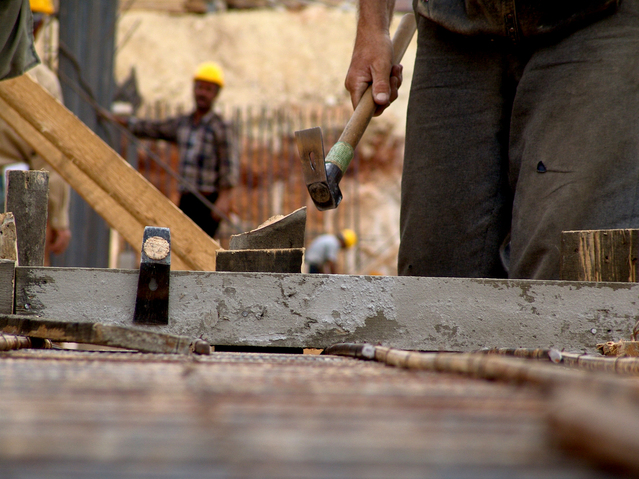Successful businesses will need to stay ahead of the competition. A vital component of being ahead of the pack is being aware of future trends and integrating emerging technologies into your companies’ processes before they become commonplace in the industry, just like adapting marketing for mortgage brokers in time for the housing market boom. Below we learn more about the top construction technologies and trends that are set to transform the construction industry in 2017.
1. Wearable Technology in Construction
Wearable Technology is changing the building and construction industry, one smart device at a time. Wearable technology is intended to increase safety, drive productivity and reduce costs and expenses such as reducing the builder’s indemnity insurance fees.
And it’s rapidly becoming big business. Analyst Bernard Marr states that the wearable technology sector is expected to hit $3 billion annually and $4 billion by 2017. Some of the most advanced wearable devices comprise safety vests with GPS, hard hats with virtual screen visors and augmented reality devices to experience layout elements like never before, thanks to advanced software testing courses.
2. Modular Homes
Modular homes (occasionally called pre-fabricated residences) are homes built off site. They are constructed in sections at a factory and are subsequently transported to site where they’re assembled by builders using cranes to put all the pieces together, limiting the amount of heavy lifting for builders and saving their backs and their time! They are quickly becoming a popular selection for new homeowners over conventional constructions since they’re normally built much quicker and cheaper. This is mainly because there are no delays for when bad weather strikes, as 90 percent of the construct is finished indoors and off-site.
And although modular homes have a rather unfortunate reputation for all looking the same, this definitely is not true of the future. There are lots of unique designs available from several businesses and almost all of them allow for customisation, so that you can make sure your build has individual qualities. Further, the craftsmanship is of a standard as high as or higher than conventional constructions, as quality control is simpler in a factory. There is also an emphasis on using powerful, sustainable materials such as laminated timber products, so the homes will be cheaper to run and more environmentally-friendly.
3. Robot Automation in Construction
Some occupations, such as bricklaying, involve labour-intensive, repetitive tasks which pose a significant injury risk to employees. This issue might be relieved through automation.
Research by Construction Skills Queensland has discovered that later on, up to 75 percent of the labour-intensive tasks will be automated. And this is particularly important in Australia’s aging population since lots of these employees are in building and construction.
Robot Automation has hardly scratched the surface of its potential in the business. However, the technologies that are available have shown impressive results. An example is the Fastbrick robot which can print and lay bricks, making the process dramatically more efficient and safer. Technologies like these will begin to become more prevalent on worksites in 2017.
4. 3D Printing
A whole lot of people in building and construction are excited about 3D printing. Materials can be manufactured and buildings may be constructed by means of a machine at a fraction of the time and in a considerably cheaper price than traditional construction. By way of instance, one business in China constructed a home for under $5,000, while another was able to build 10 homes in one day.
Importantly, Speed and price are not the only advantages. Strength and durability is a significant feature of a whole lot of new builds, with some homes able to withstand an 8.0 Richter scale earthquake. There also have been great leaps forward in design and materials, many of which are highly sustainable materials like engineered timber. 3D printing technology is very likely to become a lot more widespread in 2017 as a quicker and cheaper alternative housing technique.
5. Drones on Construction Sites
You may have heard about Amazon planning to use drones as a means to accelerate the efficiency of package deliveries. Now the construction sector is also getting on board. Site inspections need a team to spend an entire day in sunlight, measuring, taking photographs and analysing data. Drones provide a cheaper, quicker and safer choice.
A drone could be sent up to survey an area; either controlled remotely flown “autonomously” via pre-planned directions. These drones can send back information, video and outcomes in real-time, ensuring that your team can get the job done faster and more efficiently, with the entire picture in mind. The real time imagery can be helpful for construction sites in more ways than one. As slab cranes start moving big concrete slabs, it can be hard for the human eye to detect any potential hazards that have come after the initial survey, a live drone can tell the project manager in real time if any problems do arise so they can quickly call the crane to stop if need be. Drones are already a common feature in several site inspections, but better regulation means that they’re most likely to develop in usage in 2017.
Better get going on those mortgage broker websites to get in the game before the mass production of houses peaks.
